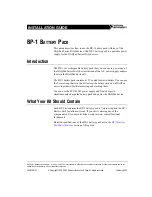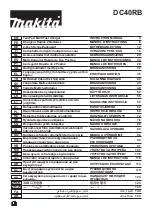
Publication No: US-ODY-TM-AA September 2016
www.odysseybattery.com
19
ODYSSEY
®
BATTERIES IN NO-IDLE
APPLICATIONS
Since these batteries are dual purpose in nature they can
be used for both engine starting and deep cycling
applications. This makes them particularly well suited for
feets such as police vehicles that would like to power
their computers and communications equipment without
having to idle their engines. Auxiliary Power Units (APU) on
trucks provide another example of a no-idling application.
All of these require energy sources to power loads such
as computers and refrigerators with the engines shut off to
reduce their carbon footprints and lower gas consumption.
As discussed in a previous section, properly charged
ODYSSEY
®
batteries are capable of delivering as many
as 400 cycles to a 80% DOD. A shallower discharge will
yield higher cycles, as noted in the cycle life vs. DOD graph
shown earlier. This is the reason why ODYSSEY batteries
are becoming increasingly popular in APU and police feet
applications that require batteries to have both high cycling
and excellent engine cranking capabilities in the same
package.
Correct Wiring Connections
Positive tap to load
Negative tap to load
Improper Wiring Connections
Positive tap to load
Negative tap to load
PARALLEL CONNECTIONS
It is common to have batteries connected in parallel to
achieve a desired amp-hour capacity. This is done by
connecting all the positives to each other and all the
negatives to each other.
Typically the positive and negative leads to the load
are taken from the same battery; usually the leads from
the frst battery are used. This is not a good practice.
Instead, a better technique to connect the load is to take
the positive lead from one end of the pack (the frst or last
battery) and the negative lead from the other end of the pack.
The two methods are illustrated above. Solid lines and
arrows indicate positive terminals and leads; broken lines
and arrows indicate negative terminals and leads.
In both illustrations, the positive leads are connected to
each other; similarly the negative leads are connected to
each other. The only difference is that in the frst illustration
the positive and negative leads to the load come from the
frst and last batteries. In the second case, both leads to
the load are tapped from the same battery.
The frst schematic is recommended whenever batteries
are hooked up in parallel to increase battery capacity.
With this wiring, all batteries are forced to share both charge
and discharge currents. In contrast, a closer inspection
of the second schematic shows that it is possible for only
the battery whose terminals are tapped to support the load.
Implementing the frst schematic eliminates this possibility
and is therefore a better one.
VENTILATION
VRLA batteries like the ODYSSEY battery depend on the
internal recombination of the gases for proper operation.
This is also why these batteries do not require periodic
addition of water.
The high recombination effciency of ODYSSEY batteries
make them safe for installation in human environments. It
is not uncommon to see these batteries in aircraft, hospital
operating rooms and computer rooms. The only requirement
is that these batteries must not be installed in a sealed or
gastight enclosure; however, local regulations with respect
to ventilation requirements must be followed.
CONCLUDING REMARKS
We believe that there is no other sealed-lead acid battery
currently available commercially that can match the
ODYSSEY battery for sheer performance and reliability.
We hope that the preceding material will help the reader
arrive at the same conclusion.
Содержание 25-PC1400
Страница 1: ...Technical Manual NINTH EDITION Publication No US ODY TM AA September 2016...
Страница 22: ......




































